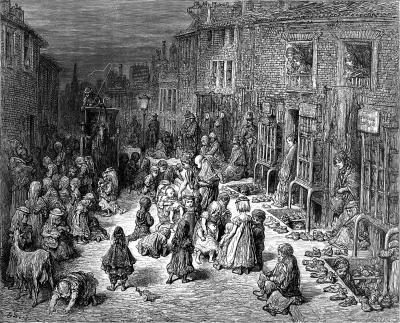The Property Bar Association recently invited myself and Professor James Lee (of King’s College London) to debate this question against two practising barristers, Edward Denehan and Giselle McGowan. Having been assigned sides, it was the job of the academics to condemn the law of nuisance, arguing that it is unfit for purpose in the 21st century. Whilst this was not my own instinctual opinion, it was interesting to be forced to consider nuisance from such a critical perspective. What follows is a summary of the arguments I presented. I even found myself convinced to a certain extent!
In order to assess the appropriateness of nuisance in modern conditions, there are two questions which we must resolve. First, what are the purposes of nuisance, and second, what is it about modernity and modern modes of living which make us question whether nuisance is fit for serving these purposes? The (or at least one) purpose of nuisance is to police and regulate the interaction between neighbours to ensure a decent quality of life for all. Modern conditions make us doubt how suitable nuisance is for this job because modern understandings of equality mean that we doubt whether the fact of having wealth (in the form of property rights) is enough to mean that one is entitled to a better quality of living, and that not having such rights should be seen as a barrier to preventing uses of land which harm your life in this way. A number of features of nuisance were really about wealth preservation, rather than harm prevention, and that this is what makes nuisance laws appear unsuited to modern conditions.

Hunter v Canary Wharf held that one must have a property right to sue in nuisance. What does this mean? It means that those already suffering under the burden of worst access to safe housing, and to quality housing, are unable to defend themselves against interferences with their use of their home. By definition, the activities being complained of are not reasonable – if the defendant’s use of land was reasonable then any nuisance claim would fail in substance rather than on the basis of standing. In theory, therefore, the use of the land is not one which we would want to allow in general. The law mandates its cessation, or at least the provision of compensation to those affected as long as the right person brings an action.
The rules of standing in nuisance prevent a class of incentivised victims from putting a stop to a use of neighbouring land even if that use is unacceptable and unreasonable. Instead they have to continue putting up with it even if it has a likely albeit perhaps unproven effect on their physical and mental well-being (such as disruption to sleep through noise; or harm from air pollution, noxious smells and the like). The non-occupying land owner has the right to sue, but is suffering no harm, and so may have no real incentive to bring an action in respect of these nuisances.

Problem one: the shift away from injunctions to damages means that private law can allow harmful uses permitted by planning law to continue (thus avoiding a clash with planning law). This does not solve the problem because of the limits to what planning law is entitled to consider. In planning, any disproportionate individual effects are specifically not to be considered. The planning decision-making process is not able to assess whether the effects of a development are fairly distributed amongst those in the vicinity. For example, the fact that, because of differing noise levels, a wind turbine has a hugely more damaging effect on Mrs X’s house values than on Mr Y’s is not a relevant consideration. The effect on the area as a whole is relevant, but individual effects are not. So in Grange Wind Farm v North Lincolnshire Council

In fact, the locality principle means that those areas which are already suffering environmental burdens will continue to do so but at a higher level. Air pollution is particularly problematic in this respect given the clear evidence of its enormous effects on health. This goes beyond a fairness issue and extends to a human rights issue, but the law of nuisance with the locality principle in place is incapable of adapting to these concerns.
My final argument was that any view which attempts to disassociate and limit nuisance to a minor role within a specific subset of the operation of property law, is failing to recognise the important as yet unfulfilled role which nuisance law can play. It can be crucial in ensuring respect of human rights, in allowing for equal or at least not unfair distributions of environmental harms, and as such ought to be a source of life-enhancing (rather than wealth preserving) rules in English common law. In attempting to develop from a starting point of the Victorian era, where an unequal burden of such harms was accepted and even encouraged, the law of nuisance can only operate effectively in modern law if it sheds its Victorian legacies. The roots of nuisance mean that it cannot currently adapt fast enough to recognise what constitutes the minimum baseline of harm that anyone must suffer from another’s use of land.
Overall, whilst many of the arguments I made in the debate can be rebutted or challenged to an extent, there is, I think, a core of truth in them. Nuisance, as a defender of quality of life, sits at odds with who we think deserves a decent quality of life, and what that means in the distribution of environmental burdens. In that respect at least, nuisance may well be unsuited to the 21st century.
__________
How to cite this blog post (Harvard style)
Lees, E. (2021). Is Nuisance Fit for Purpose in the 21st Century?. Available at: https://www.law.ox.ac.uk/research-and-subject-groups/property-law/blog/2021/01/nuisance-fit-purpose-21st-century (Accessed [date]).
Share:
